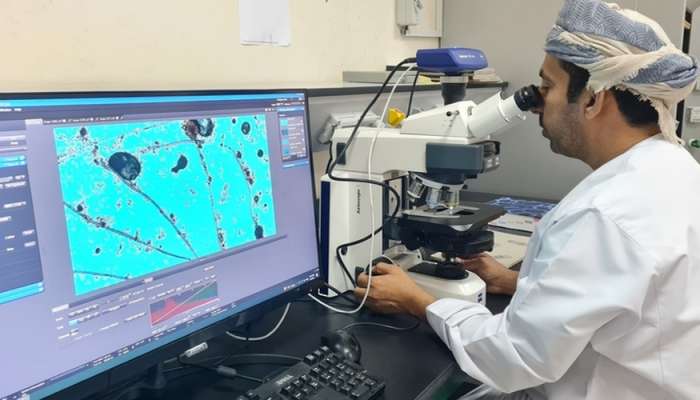
Nizwa-- A research team from the University of Nizwa took part in a unique scientific breakthrough that led to the discovery of a new fungal family comprising two genera and seven species. The fungal family is distinguished for its unique ability to coexist inside ant nests.
The findings were published in the international journal Studies in Mycology, one of Netherlands’ most prominent publications specialized in mycology.
The achievement was made through international collaboration with researchers from Brazil, China, the Netherlands and Austria. The team was led by Dr. Abdullah Mohammed Al Hatmi, Assistant Professor at the University of Nizwa and Head of the Microbiology Laboratory at Nizwa University's Centre for Research on Natural Sciences and Medical Sciences.
Al Hatmi said that the discovery constitutes a milestone in the field of fungal research, noting that the research highlights the complex symbiotic relationships between fungi and ants that date back millions of years.
Al Hatmi added that identifying such a new fungal family opens up vistas for understanding ecological balance and the diversity of microorganisms. He expressed Nizwa University's pride about participating in this global research and its commitment to support quality research and consolidate international scholarly partnerships.
Al Hatmi pointed out that the discovery helps deepen our understanding of the ecological role of fungi and enhances the potential for future research into the interactions between microorganisms and insects within their natural environments.
The study contributes to the development of knowledge in the fields of biodiversity and the microenvironment of living organisms. The research team collected ant nests from various plants and succeeded in accurately isolating and classifying fungal species based on microscopic, physiological, and genetic analysis. The study resulted in the addition of a new family to the Chaetothyriales phylum, known for its species that are symbiotic with ants and other fungi.
--- Ends/Bishara/AG